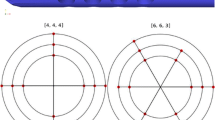Abstract
Background
The flow pattern of the cerebrospinal fluid is probably the most important factor related to obstruction of ventricular catheters during the normal treatment of hydrocephalus. To better comprehend the flow pattern, we have carried out a parametric study via numerical models of ventricular catheters. In previous studies, the flow was studied under steady and, recently, in pulsatile boundary conditions by means of computational fluid dynamics (CFD) in three-dimensional catheter models.
Objective
This study aimed to bring in prototype models of catheter CFD flow solutions as well to introduce the theory behind parametric development of ventricular catheters.
Methods
A preceding study allowed deriving basic principles which lead to designs with improved flow patterns of ventricular catheters. The parameters chosen were the number of drainage segments, the distances between them, the number and diameter of the holes on each segment, as well as their relative angular position.
Results
CFD results of previously unreleased models of ventricular catheter flow solutions are presented in this study. Parametric development guided new designs with better flow distribution while lowering the shear stress of the catheters holes. High-resolution 3D printed catheter solutions of three models and basic benchmark testing are introduced as well.
Conclusions
The next generation of catheter with homogeneous flow patterns based on parametric designs may represent a step forward for the treatment of hydrocephalus, by possibly broadening their lifespan.









Similar content being viewed by others
References
Brinker T, Stopa E, Morrison J, Klinge P (2014) A new look at cerebrospinal fluid circulation. Fluids barriers CNS 11:10
Greitz D, Wirestam R, Franck A, Nordell B, Thomsen C, Ståhlberg F (1992) Pulsatile brain movement and associated hydrodynamics studied by magnetic resonance phase imaging. The Monro-Kellie doctrine revisited. Neuroradiology 34:370–380
Milhorat TH (1975) The third circulation revisited. J Neurosurg 42:628–645
Penn RD, Basati S, Sweetman B, Guo X, Linninger A (2011) Ventricle wall movements and cerebrospinal fluid flow in hydrocephalus. J Neurosurg 115:159–164
Galarza M, Giménez Á, Valero J, Pellicer O, Martínez-Lage JF, Amigó JM (2015) Basic cerebrospinal fluid flow patterns in ventricular ventricular catheters prototypes. Childs Nerv Syst 31:873–884
Galarza M, Giménez Á, Valero J, Pellicer O, Amigó JM (2014) Computational fluid dynamics of ventricular ventricular catheters used for the treatment of hydrocephalus: a 3D analysis. Childs Nerv Syst 30:105–116
United States Patent Serial No.78887628 (2006) Medtronic Inc. Ventricular catheter Rivulet
Lin J, Morris M, Olivero W, Boop F, Sanford RA (2003) Computational and experimental study of proximal flow in ventricular ventricular catheters: technical note. J Neurosurg 99:426–431
Bergsneider M, Egnor MR, Johnston M, Kranz D, Madsen JR, McAllister JP 2nd, Stewart C, Walker ML, Williams MA (2006) What we don’t (but should) know about hydrocephalus. J Neurosurg 104:157–159
Harris CA, McAllister JP (2012) What we should know about the cellular and tissue response causing ventricular catheter obstruction in the treatment of hydrocephalus. Neurosurgery 70:1589–1601
Drake J, Kestle JR, Milner R, Cinalli G, Boop F, Piatt J Jr, Haines S, Schiff SJ, Cochrane DD, Steinbok P, MacNeil N (1998) Randomized trial of cerebrospinal fluid shunt valve design in pediatric hydrocephalus. Neurosurgery 43:294–305
Cheatle JT, Bowder AN, Agrawal SK, Sather MD, Hellbusch LC (2012) Flow characteristics of cerebrospinal fluid shunt tubing. J Neurosurg Pediatr 9:191–197
Galarza M, Giménez Á, Valero J, Pellicer O, Amigó JM (2015) New designs of ventricular ventricular catheters for hydrocephalus by 3-D computational fluid dynamics. Childs Nerv Syst 31:37–48
Galarza M, Giménez A, Pellicer O, Valero J, Amigó JM (2016) Parametric study of ventricular ventricular catheters for hydrocephalus. Acta Neurochir (Wien) 158:109–115 discussion 115–116
Giménez Á, Galarza M, Pellicer O, Valero J, Amigó JM (2016) Influence of the hole geometry on the flow distribution in ventricular ventricular catheters for hydrocephalus. Biomed Eng 15:5–19
Thomale UW, Hosch H, Koch A, Schulz M, Stoltenburg G, Haberl EJ, Sprung C (2010) Perforation holes in ventricular ventricular catheters—is less more? Childs Nerv Syst 26:781–789
Weisenberg SH, TerMaath SC, Seaver CE, Killeffer JA (2016) Ventricular catheter development: past, present, and future. J Neurosurg 125:1504–1512
Tenti G, Sivaloganathan S, Drake JM (2008) Mathematical modeling of the brain: principles and challenges. Neurosurgery 62:1146–1157
Versteeg H, Malalasekra W (2007) An introduction to computational fluid dynamics: the finite volume method, 2nd edn, rev. Prentice Hall, Harlow, England; New York
Kehler U, Klöhn A, Heese O, Gliemroth J (2003) Hydrocephalus therapy: reduction of shunt occlusions using a peel-away sheath. Clin Neurol Neurosurg 105:253–255
Harris CA, McAllister JP II (2011) Does drainage hole size influence adhesion on ventricular ventricular catheters? Childs Nerv Syst 27:1221–1232
Harris CA, Resau JH, Hudson EA, West RA, Moon C, McAllister JP II (2010) Mechanical contributions to astrocyte adhesion using a novel in vitro model of ventricular catheter obstruction. Exp Neurol 222:204–210
Spanish Patent Serial No.201400178 (2015). Ventricular catheter with improved flow for hydrocephalus treatment
Weisenberg, SH, “Improving ventricular catheter design through computational fluid dynamics” Master’s Thesis, University of Tennessee, 2016. http://trace.tennessee.edu/utk_gradthes/3817
Linninger AA, Tsakiris C, Zhu DC, Xenos M, Roycewicz P, Danziger Z, Penn R (2005) Pulsatile cerebrospinal fluid dynamics in the human brain. IEEE Trans Biomed Eng 52:557–565
Wagshul ME, Chen JJ, Egnor MR, McCormack EJ, Roche PE (2006) Amplitude and phase of cerebrospinal fluid pulsations: experimental studies and review of the literature. J Neurosurg 104:810–819
Giménez Á, Galarza M, Thomale U, Schuhmann MU, Valero J, Amigó JM (2017) Pulsatile flow in ventricular catheters for hydrocephalus. Philos Trans A Math Phys Eng Sci 375(2096). doi:10.1098/rsta.2016.0294
Author information
Authors and Affiliations
Corresponding author
Ethics declarations
Confict of interest
Some of the prototypes modeled in this paper has been used for designing ventricular catheters granted a Spanish patent for MG, AG, JMA (23). CE patent is pending. Specifications for certain catheter prototypes cannot be given for patenting purposes still in process. Some of the models presented are currently in development for commercialization.
Rights and permissions
About this article
Cite this article
Galarza, M., Giménez, A., Amigó, J.M. et al. Next generation of ventricular catheters for hydrocephalus based on parametric designs. Childs Nerv Syst 34, 267–276 (2018). https://doi.org/10.1007/s00381-017-3565-0
Received:
Accepted:
Published:
Issue Date:
DOI: https://doi.org/10.1007/s00381-017-3565-0




